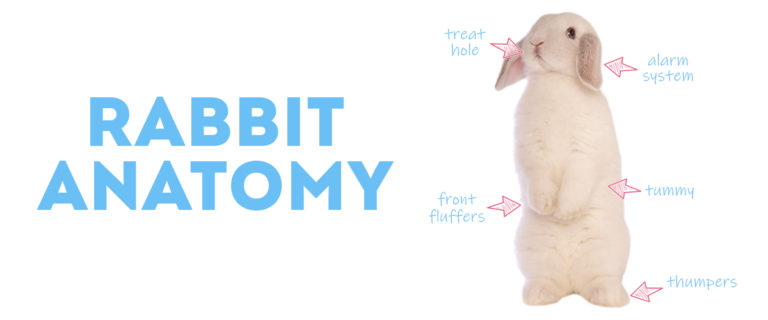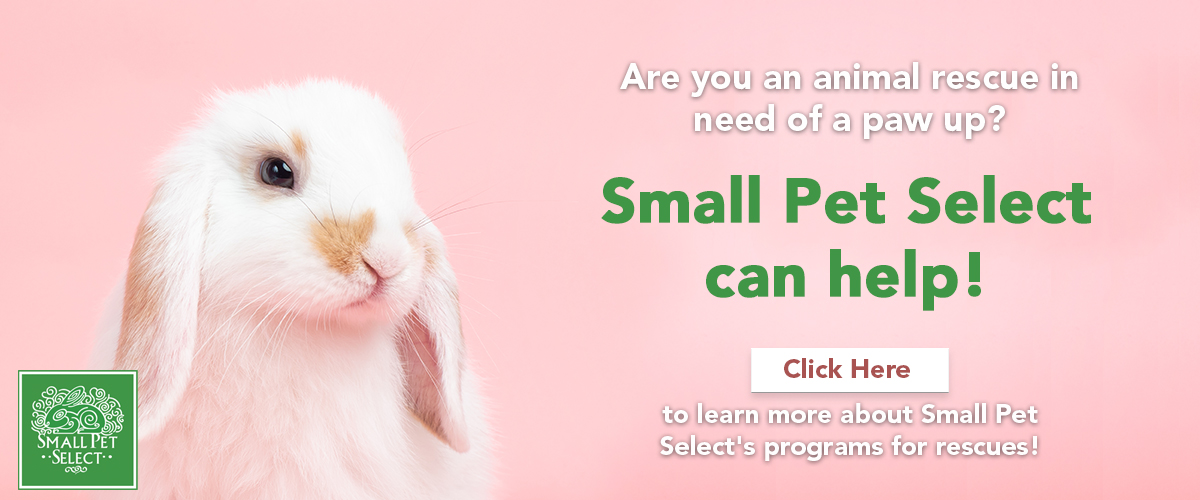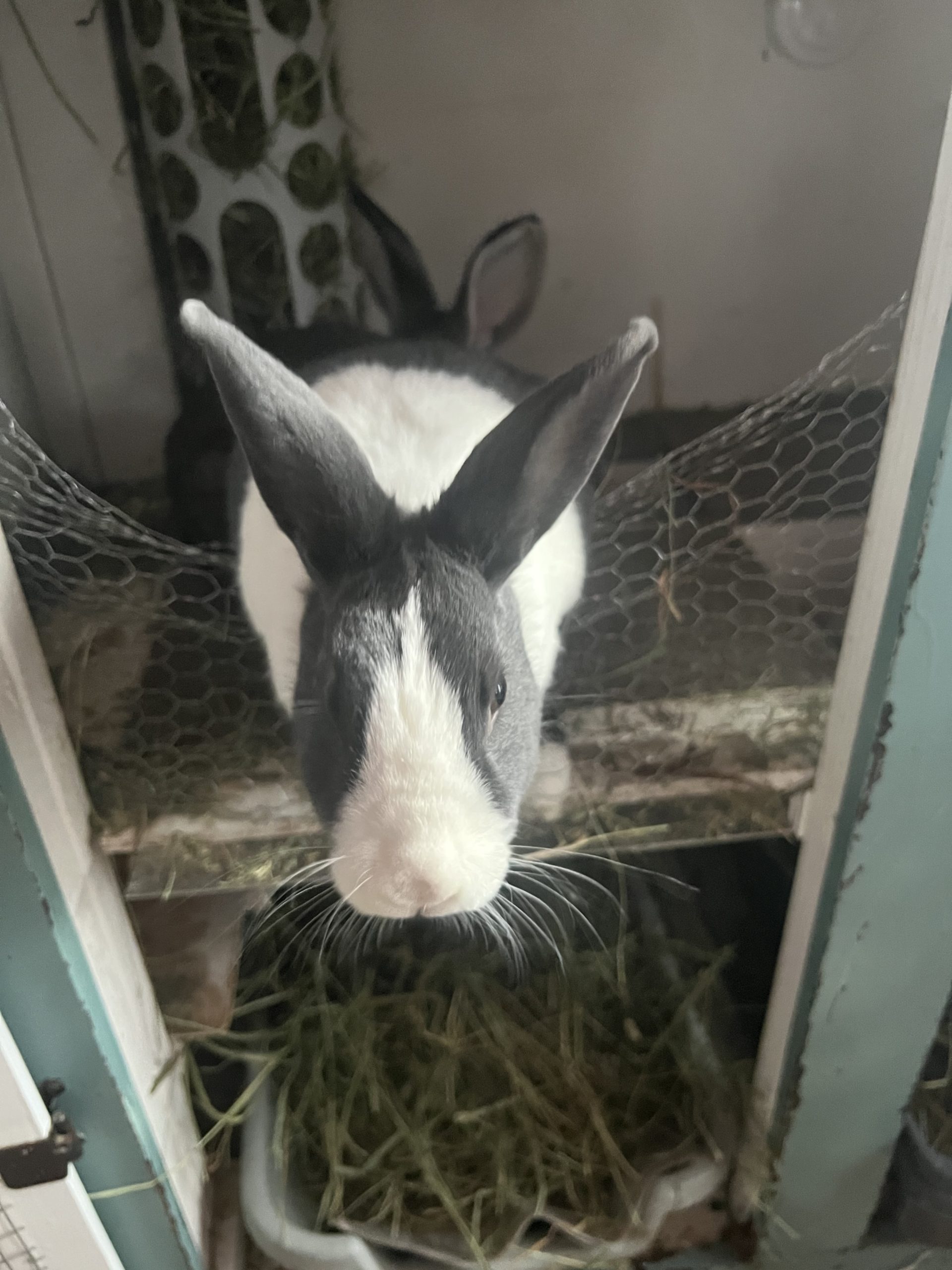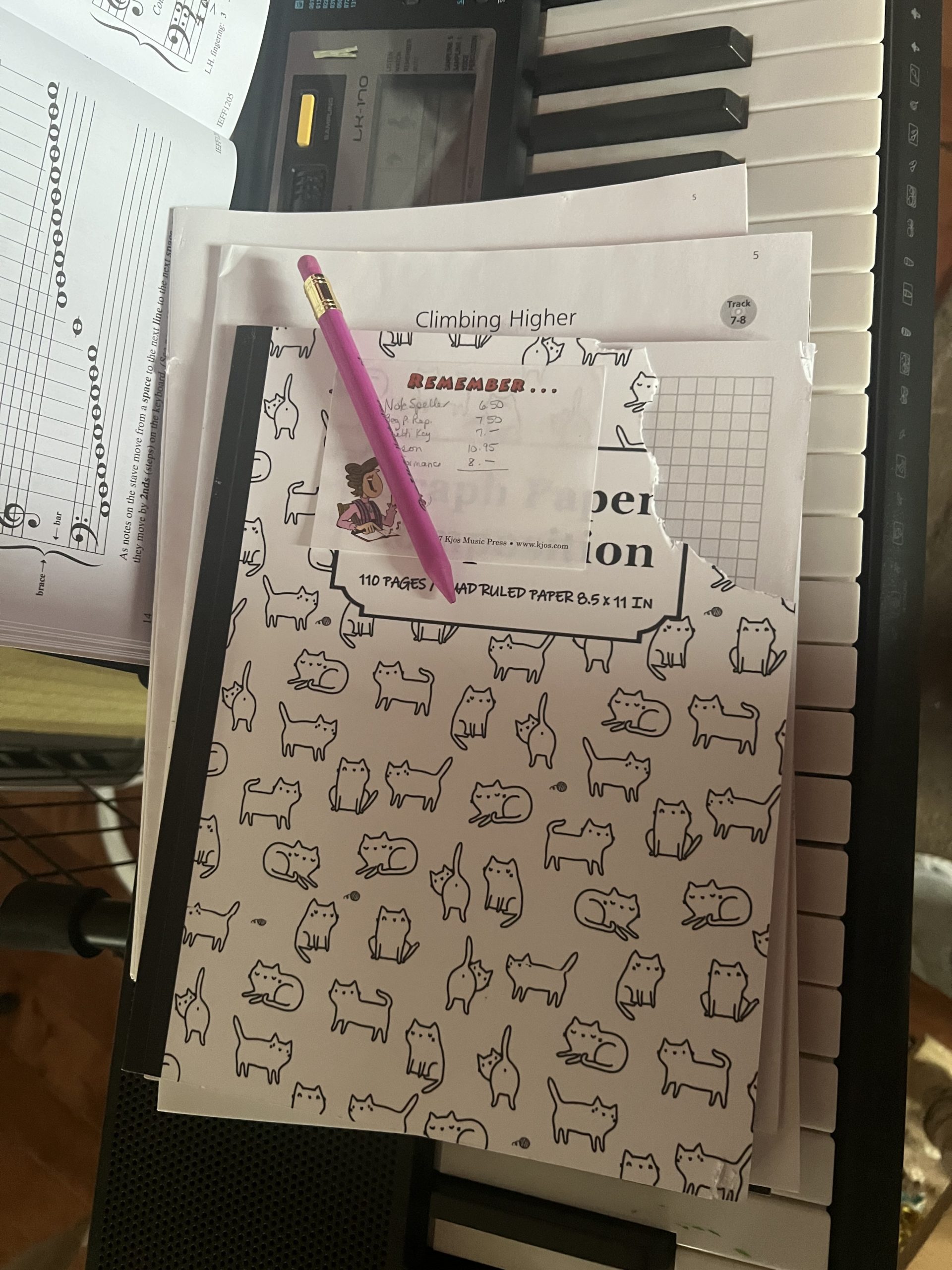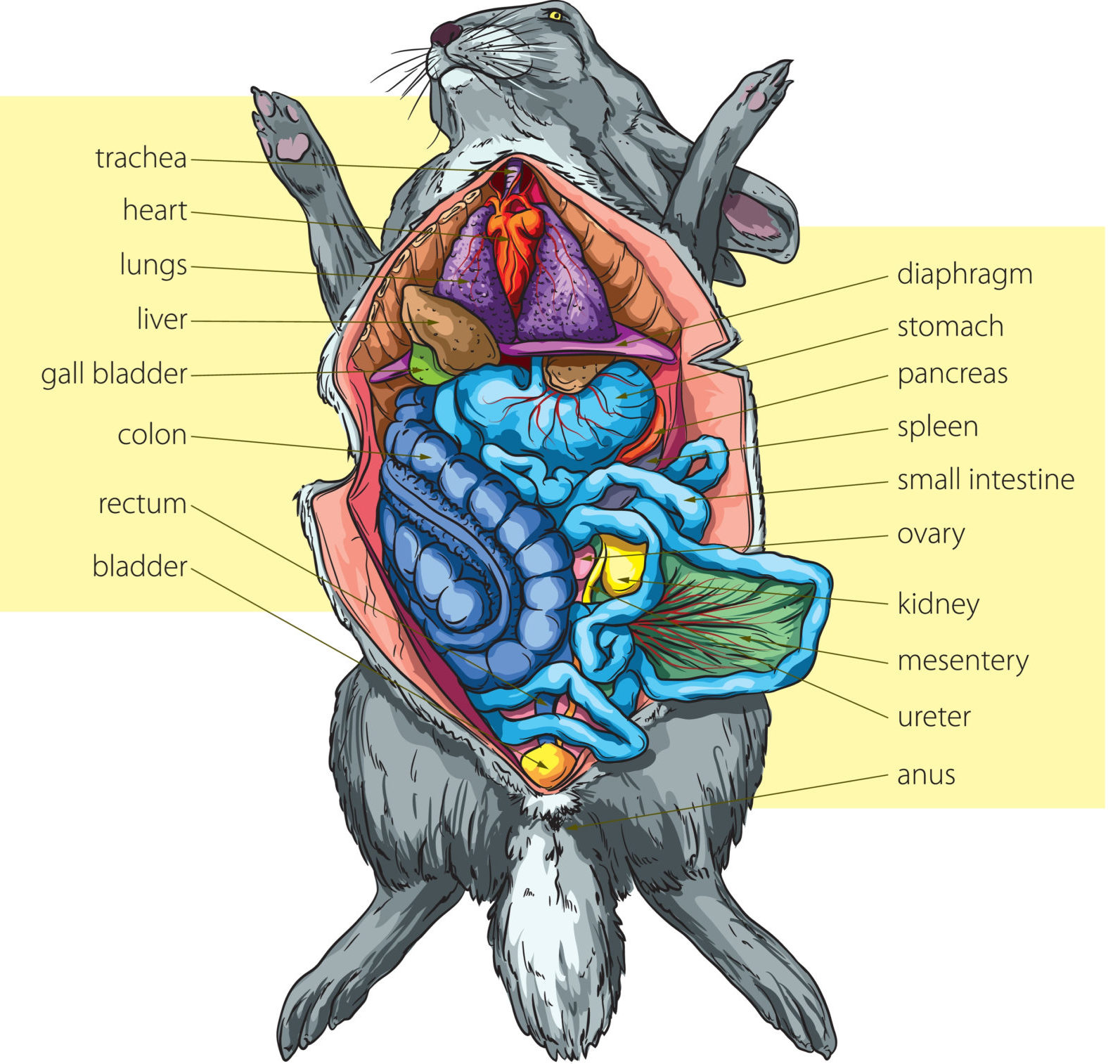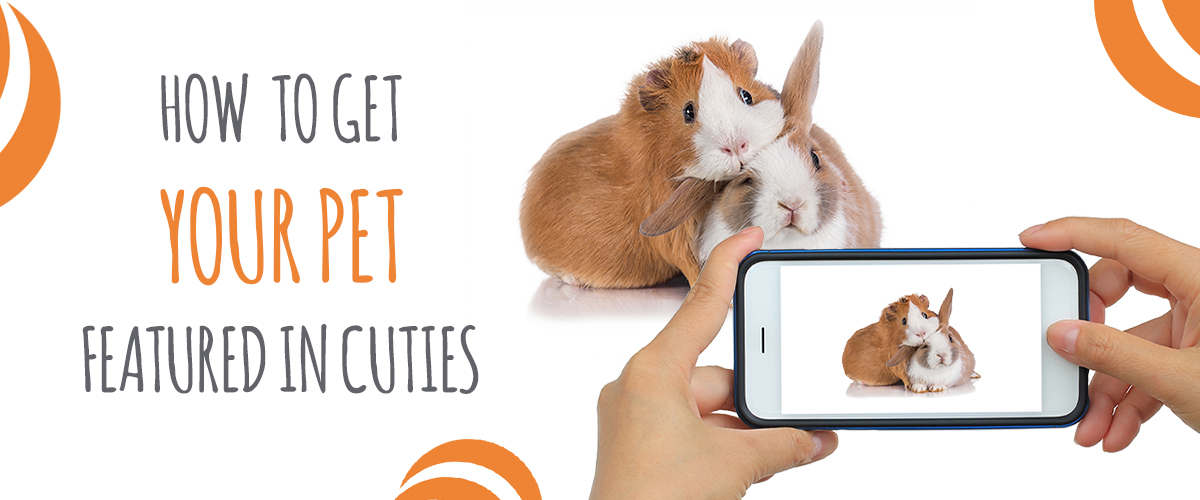A few weeks ago, we introduced you to Chinchilla anatomy. Today, to continue the anatomy series, we'll take a closer look at rabbit anatomy. But first, I wanted to share one of the most adorable parts of the lagomorph's body…the mouf. While mouf is not a scientific term, all bun enthusiasts get excited when you see it in action. So, if you haven't had the pleasure of watching a bunny eat, you're in for a treat. Here’s a video from one of our Ambassadors, Lennon the Bunny.
However, the mouf can be destructive. See Exhibit A below. I started piano lessons this week, and Pippi ate my homework notebook without guilt. I guess she does not appreciate my practicing.
Since we’re already talking about the anatomy at the front of a rabbit, we’ll start there after a brief introduction and work our way back to their adorably fuzzy bum.
Overall Characteristics
According to Zoology Notes, the average rabbit is 2-4 pounds (0.9-1.8 kilograms) and is 16 inches (40 centimeters) long. So guess all my rabbits are overachievers as they're above average. Lagomorphs are small mammals and share mammal characteristics such as a head, neck, trunk, and tail.
Mouth and Teeth
Like many rodent cousins (rabbits are NOT rodents), lagomorph teeth never stop growing. Additionally, they have two sets of teeth in their lifetime: baby and adult. I wonder what the going rate for the rabbit tooth fairy is these days.
Thanks to their split upper lip, better known as “hare lip,” it’s relatively easy to check their upper front incisors. With 28 teeth growing 24/7, they must eat high-fiber foods such as hay. If you're not sure what hay to feed your bun, check out our Rabbit Hay Guide. With eight varieties, Small Pet Select definitely has hay your lagomorph will love. If you’re not sure what kind they want, check out our Sampler Hay Box.
Nose, Eyes, and Ears
Rabbits are known for their adorable wiggly noses, just above their mouth. The more excited or curious they are, the faster they wiggle.
Above the wiggly nose in rabbit anatomy is their eyes. OneKindPlanet states that rabbits have excellent long-distance vision to protect them from predators. Even more interesting is they can see almost 360 degrees. So if rabbit kits complain that their moms have eyes in the back of their heads, it's actually true! Unfortunately, bunnies' near vision is terrible, so it’s always important to approach them from the front and announce your presence so they aren’t startled.
Another interesting fact about rabbit eyes is they have three eyelids! Also, they can sleep with their eyes open when they’re concerned about predators.
Finally, let’s discuss rabbit ears. There are two reasons why rabbit ears are so big compared to the rest of their body. First, lagomorphs have fantastic hearing to protect themselves from predators. Their ears move independently in all directions. Additionally, unlike dogs, they cannot pant through their mouths. Therefore, their ears help your bun control its body temperature.
Paws and Legs
Rabbits have four legs. The front forelimbs are considerably shorter than the hindlimbs and have five nails. Exceptionally powerful, the hindlimbs only have four nails at the end of each leg. Lagomorph nails never stop growing and need to be trimmed at least monthly.
Urogenital System/Gender
Once lagomorphs are 6-8 weeks old, it’s easy to determine their gender. For example, male rabbits, or bucks, have a penis and scrotum in front of their anus. Conversely, females or does have a vulva in front of their anus.
Tail
The second cutest rabbit anatomy part, in my humble opinion, is their tail. However, the tail is not only cute but useful. The lower part of wild rabbits’ tails is white. If rabbits feel they are in danger, the white part is visible to alert other bunnies.
While I could spend all day discussing rabbit anatomy and looking at cute rabbit photos, we've covered the main rabbit anatomy parts. Thanks for reading, and don't forget to share your cute buns with us. Click on the above photo to get your bunbun featured in Weekly Cuties.
DISCLAIMER: The links and information are being provided as a convenience and for informational purposes only; they do not constitute an endorsement or an approval by Small Pet Select of any of the products, services or opinions of the corporation or organization or individual.
Want to learn more about rabbits? Check these out!
Small Animal Recycled Paper Pellet Bedding: All You Need to Know



